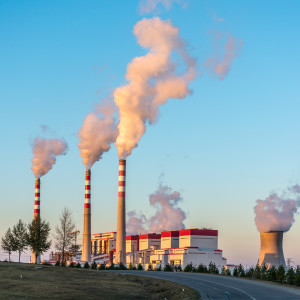As summer approaches, consider the possibility of electrical power blackouts at major American cities in combination with extremely hot weather. It could have a debilitating effect on public health.
According to a study done by a team of scientists from several American and Canadian universities and published in the journal “Environmental Science and Technology,” new research shows that a widespread blackout during an intense heatwave could put an overwhelming majority of urban residents in danger. The study focused on three cities: Atlanta, Detroit, and Phoenix. In Detroit, more than 450,000 people — or about 68 percent of the population — would be exposed to indoor temperatures equal to or greater than 89.6 degrees Fahrenheit — the level at which heat exhaustion and heat stroke are possible. In Atlanta, more than 350,000 people, or about 70 percent of residents, would be in peril. And, in Phoenix, the entire population of 1.7 million people would be at risk.
Faced with this possibility, a good case can be made for increasing the number of dedicated cooling centers to shelter thousands of people, mainly people who would lack access to air conditioning and thus exposing them to dangerous indoor temperatures during a heatwave.
More than ever, we need political leadership at the national level to put some muscle into our electricity supply system. The last thing we can afford is a heat-related loss of electricity reliability. There isn’t enough baseload power, especially in states which have deregulated their electricity markets, where wholesale markets typically opt for the cheapest fuels. The contrast between fuels couldn’t be sharper. Natural gas, solar, and wind power command a growing share of the market while crowding out baseload coal and nuclear plants. More than 95 percent of all U.S. electric power capacity built over the past 10 years uses gas or renewables because in many cases it’s cheaper to build government-subsidized
The upshot is many coal and nuclear plants have been shuttered, reducing the baseload capacity that undergirds the electric grid. While capacity keeps being added to the grid, it’s largely capacity that works when the weather permits, not when it’s needed most. The foundation for the reliable delivery of electricity is cracking.
California’s electrical power outages last year can be largely attributed to closure of coal and nuclear plants while the state added more than 40 gigawatts of solar and wind power to its generation mix. The outage was at night, when temperatures remained scorching and solar power was of no help, when demand overwhelmed the grid.
If renewable power only works when nature permits, there’s urgent need to better compensate dispatchable baseload power plants to ensure they can be available to balance the supply and demand when renewables cannot.
We must refocus energy policy on retaining baseload generation to ensure grid reliability during extreme weather events. With that goal in mind, a few states have already adopted “capacity payments” into their rate structures to help keep coal and nuclear plants online. Market reform to ensure the grid has a reliable backstop is an urgent issue we can’t afford to ignore.
The research indicates that unless corrective measures are taken to prevent the premature retirement of nuclear and coal plants, we’re going to see thousands of people in peril from heat strokes during electrical power outages. We need a reliability bridge to our energy future. Maintaining our existing baseload generation is the right choice.

